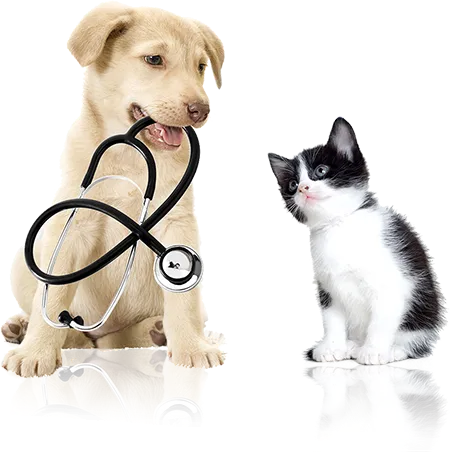
Dentistry
Shohola Veterinary Hospital offers dental services. We will evaluate your pets dental condition and recommend the best course of action.
Dental disease in animals is a serious problem and very commonly mistreated. Untreated dental health issues can lead to severe cardiac, renal disease and pain.
Many pets just need a full dental cleaning and then proper care at home after the following appointment. In other serious cases some animals some animals have broken teeth or an abscess around the root of the tooth and need to be extracted. Every extraction is important if the tooth is damaged of if dental disease has led to teeth/bone resorption. Most dogs and cats do extremely well after their dental procedure whether it was a routine cleaning or an extraction. It is very important to keep up on dental care at home after the dental cleaning. Shohola Veterinary Hospital does offer a take home care kit to go over the proper care for your pet after their cleaning or extraction to prevent future dental disease.
Dogs and Cats are given antibiotics prior to their dental procedure and continue on antibiotics for a few days after the dental. The antibiotic is given due to the amount of bacteria in the mouth and to prevent any damage to their vital organs. Pets over the age of 4-5 need to have pre-anesthetic blood work performed prior to the procedure. This is to evaluate their internal organ function and to assist with determining their anesthetic risk and the type of anesthetic drugs to use.
All patients undergoing a dental cleaning will have an IV catheter undergoing a dental procedure, be on IV-fluids, intubated and on Isoflo/Oxygen anesthesia. While under anesthesia an assistant constantly monitors their vitals and overall condition, utilizing ECG, pulse-oximeter, and esophageal stethoscope.
General Dental Information for Cats and Dogs
Puppies typically have 28 temporary teeth that come out approximately 3 to 4 weeks of age. Most dogs have 42 permanent teeth that you can start to see around 4 months of age.
Over 60% of dogs that are over the age of 3 exhibit signs of gum disease. In clinical practice, many dogs start showing dental problems by the age of 1, Symptoms may include yellow and brown build up of tartar along the gums and the teeth included with red inflamed gums and bad breath.
Purpose of the teeth
Incisors: cutting and grabbing food
Canine teeth: holding and tearing food
Premolars: cutting, holding, and shearing food
Molars: grinding food
Numbers of teeth
Many mammals, including dogs, cats, amd ferrets are "diphyodont" meaning they have two sets of teeth, one set (called "deciduous) being shed and replaced by a permanent set. Although the exact number can vary, puppies have approximately 42 permanent teeth. Feline kittens have 26 deciduous teeth. and adult cats have 30 permanent teeth. Ferret kids have 30 deciduous teeth, while adults have 34.
Tooth Eruption
In kittens and puppies, the baby teeth begin to erupt at about 3-4 weeks of age the permanent teeth begin to erupt around 3-4 months of age. By 24 weeks of age, most of the permanent teeth can be seen.
Please contact us to discuss dental disease in your pet and the best possible treatment optons.

